If there was a list of the most easily accessible performance upgrades for Miatas, cold air intakes would be number one. You could call it a ‘gateway’ upgrade which sets off a chain of many other modifications.
To be more accurate though, we’d like to call cold air intakes a ‘support’ upgrade.
A cold air intake is part of the collection of little things that add up. Though it will change how your car sounds, it does not create power by itself. Instead, it helps your already modified engine to manage it’s additional power more efficiently.
You will observe a noticeable power gain from your new intake system when you pair it with other aftermarket upgrades.
In this guide, we’ll show you whether intake mods live up to their hype, how to use them correctly, and how to find the best cold air intake for your Miata.
What to Expect from Installing a Cold Air Intake
Factory airboxes have to comply with strict emission standards which makes their design restrictive. They’re usually a compromise between noise reduction, packaging, and performance.
The idea of a cold air intake is that you replace a restrictive factory airbox with a higher-flowing aftermarket air filter. These air filters are placed away from the heat in your engine bay so it can draw cooler air.
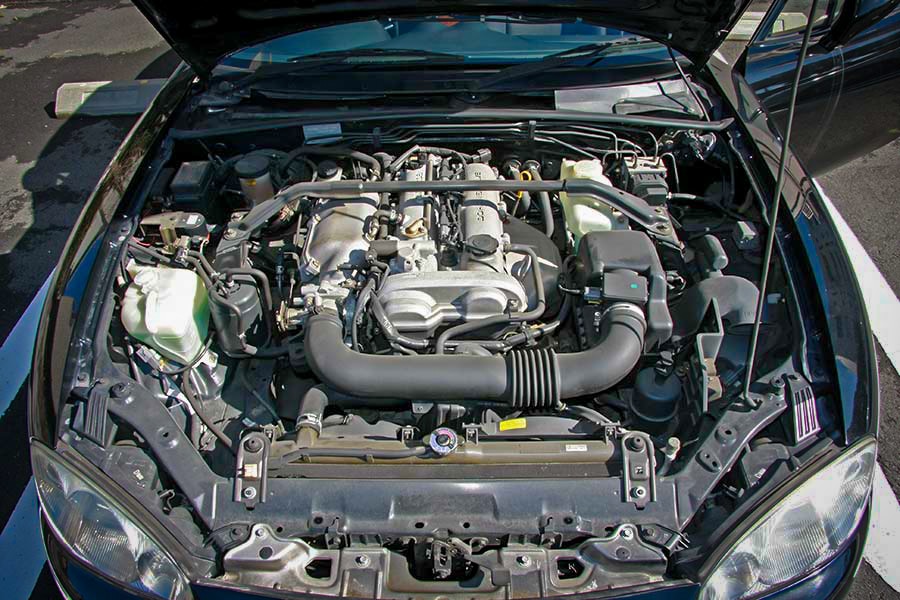
If the fuel-air mixture in your engine is oxygen-rich, it burns much hotter. Because the air being pulled by the newly placed filter is cooler and denser (oxygen-rich), it creates a bigger bang within your engine’s combustion chamber.
In theory, this should give you more power, but it does so only if placed correctly and paired with the right mods.
With cold air intakes, placement is the most important thing. If they’re not in the right place, you’re going to have a hot air intake. What this means is, if your air intake is near the heat of your engine bay, it’s going to pull in hot air instead of cold air.
This can result in power loss instead of power gain. This is called “heat soak”.
For a performance intake systems to work the way it’s supposed to, it must be able to draw cooler, outside air from under the bumper or from inside the fender/wheel well.
Cold Air Intake: Myths
Whether an aftermarket air intake system is just bling under the hood or if it adds power to your engine is a hot debate in the car community.
Some say it reduces power and makes your engine run worse while some swear by its effectiveness. Ideally, the best Miata cold air intakes should add power to your engine, even if it’s very little.
To completely unlock the power of a CAI though, you need to have some kind of engine mod in place.
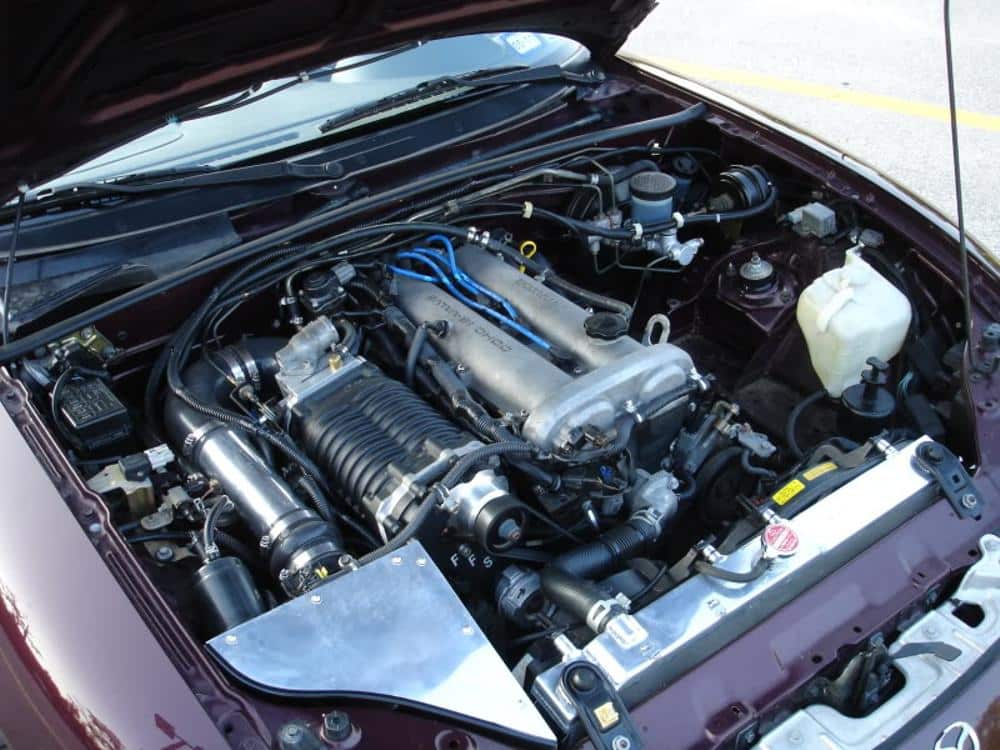
A non-turbo car, for example, won’t be able to use the CAI to its max potential.
It all comes down to how you use it and what other upgrades you pair it with. There are too many misconceptions about Miata performance intake systems floating around on the web and so, we’re going to bust some myths for you.
Note: If you plan on adding forced induction eventually, we’d recommend you to wait on the intake as your options may vary, depending on what kind of turbo kit or supercharger you get.
A Cold Air Intake Will Give You Instant Power Gain
On paper, this modification makes a lot of sense. But there’s just so much going on under the bonnet that most of us tend to overlook.
You can’t just put a Miata air intake kit on a stock car and expect power gains immediately. If your car is bone stock, cheap cold air intakes may cause it to lose power.

Even though most cold air intake manufacturers claim between 12 to 18 HP in power gains, 2 to 3 HP is the most you will get if installed without any other supporting mods.
The additional air-flow that a performance intake provides can only prove useful on a car that makes more power than it’s supposed to. A modified Miata MX-5 for instance would need that additional air-flow.
One of the reasons why these modified cars benefit from cold air intakes is because they’re dyno tuned. This means, their ECUs have been tweaked and tuned to accept their performance upgrades.
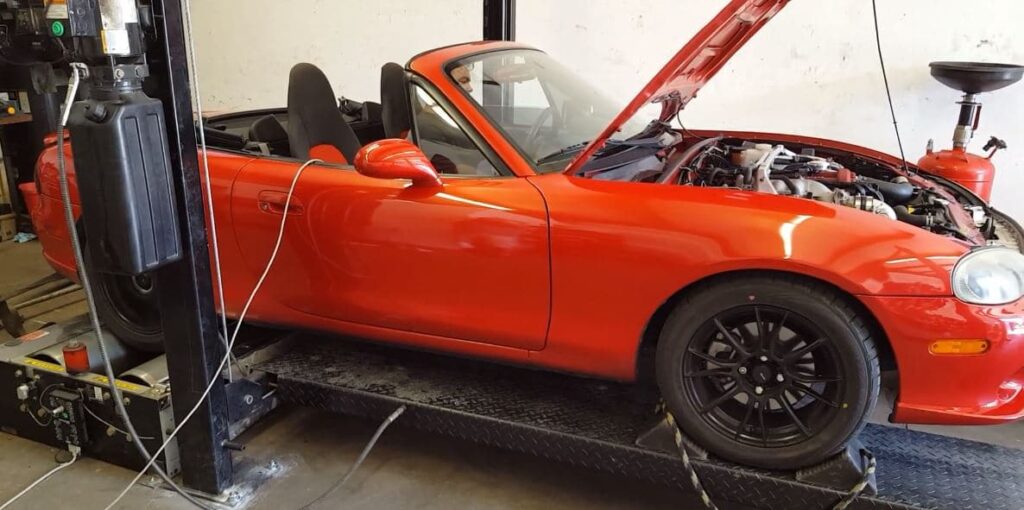
Stock ECUs are only designed to work with stock cars. All performance upgrades are set up to perfectly match one another to give you a collective power boost.
Performance Intakes Are Better Than Factory Airboxes
Factory air boxes are designed by engineers who put in a lot of time and effort to squeeze out as much power from the engine as possible. They’re often under pressure to make sure they get the best results and so, they do.
This means that most cars come with a well-designed air-flow system that works perfectly. Unless you get a cold air intake for very specific, well thought out reasons, you’ll find that the stock airbox can work a lot better.
Factory air boxes are very effective in stock cars. They’re designed to work with a mass airflow sensor which tells the ECU how much fuel the engine should receive. If you bypass this system with a cold air intake, it might confuse the stock ECU.
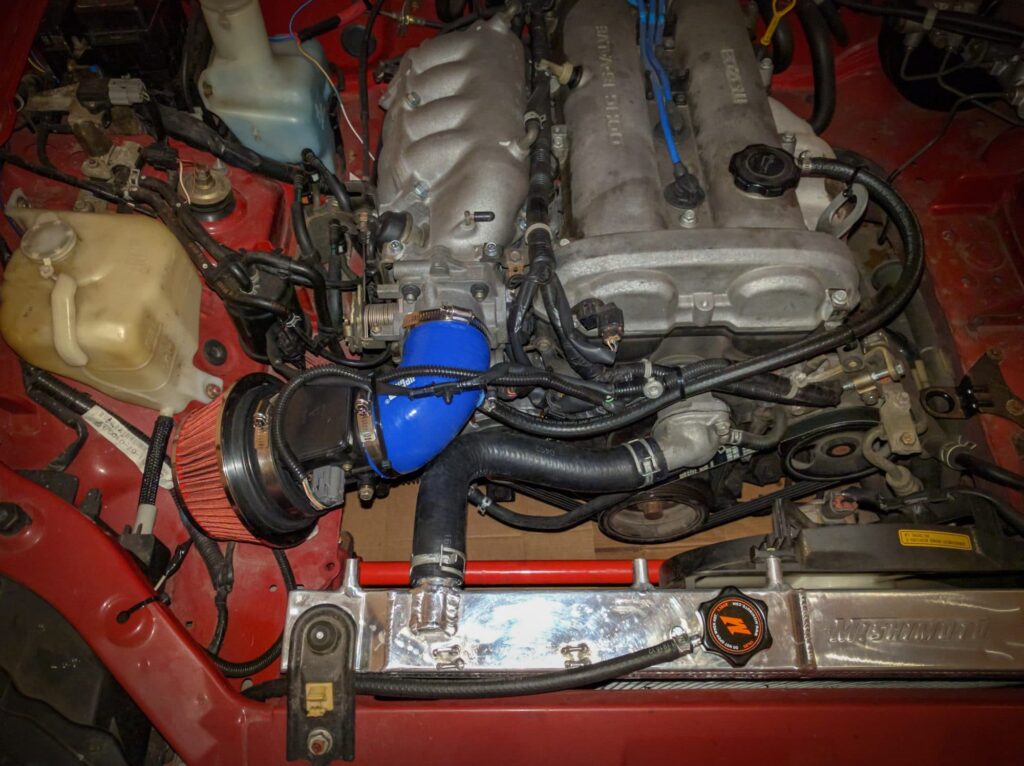
There are subtleties between SRI and CAI‘s too. Both are designed for different purposes, and then among them, there are different designs again.
Compare them to the stock intake on your Miata, which does a pretty good job at bringing in cool air into the engine. What matters when it comes to cold air intake is the tubing length, placement, and smooth air-flow.
To fully enjoy the benefits of a performance intake, your car needs to be dyno tuned by an expert.
DIY Cold Air Intake
Design-wise, aftermarket intake systems are very simple and there isn’t much going on mechanically. You can make a great intake for your Miata, at home in your garage!
The Miata is a top car to work on by yourself and we’ve seen some great DIY intakes on MX-5 Miatas around the world. As long as the design is executed well and the build is backed up with enough research, you should be fine.
The best part about making your cold air intake is the flexibility you get when it comes to placing your air filter.
A few things to get you started on making your own cold air intake:
- Air Duct
- 90 Degree Elbow Hose
- Hose Clamps
- Pod Filter
Tips for NA Miata Owners
If you build your Miata’s intake system so that the air filter sits in the headlight bucket, you can use that space for more airflow. All you need to do is construct a small intake scoop in your headlight cover or turn indicator.
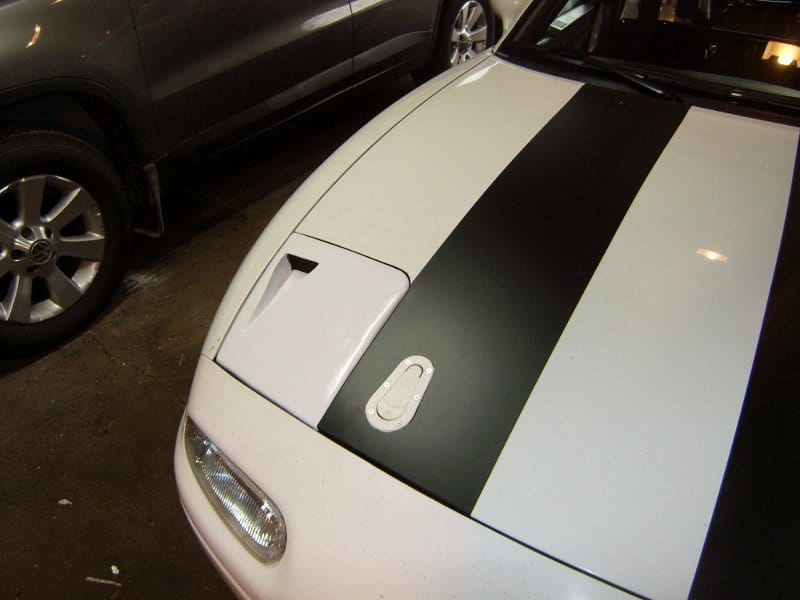
You can either get creative and build these scoops yourself or simply buy the things you need and put them together. This is probably the best NA Miata cold air intake design for DIYers.
You can buy the scoops here:
Miata Cold Air Intake: Your Best Options
When buying a bolt-on intake kit for your Miata, it is important to remember that most power gain related claims made by manufacturers aren’t usually accurate.
The claimed numbers should not be considered as a benchmark as the actual results will vary depending on how you use the intake.
You’ll see a radical difference in the design of each intake kit across all generations of the Mazda Miata MX-5.
In this section, we’ll run you through what we feel are the best Miata cold air intakes, sorted by each generation.
For NA/Mk1 Miatas
Aftermarket support is one of the best things about the NA Miata. Of all Mazda Miatas, it’s easiest to find performance parts for this one.
You won’t have to do a lot of digging to find great cold air intake kits for your NA Miata. Aftermarket part manufacturers seem to know exactly what enthusiasts are looking for, and so they’ve given us some really good options.
Jackson Racing CAI

Manufacturer: Jackson Racing
Claimed / Estimated Gain: 14 HP
Intake Placement: Radiator Front
Heat Shield: Included
Compatible Years: 1993 – 1999
Warranty: 1 year
Out of all the intakes listed in this guide, this one by Jackson Racing features the most unique design. Unlike most Miata CAIs, Jackson Racing’s unit isn’t form over function.
Instead of drawing hot air that has been through the radiator, it manages to draw cooler, outside air from beyond the radiator. This helps lower the intake temperature.
It adopts a box design that looks very OEM and sits neatly under the hood. It’s expensive for what it is but it works and really enhances the overall character of your Miata.
In our opinion, the manufacturer’s claimed gain of 14 HP is a longshot. Expecting 4 to 5 HP at the most would be fair.
There are some disadvantages though. Because of the way it is placed, removal can take longer than you’d expect, so if you are regularly working on your car, keep this in mind.
The airbox it comes with has a bad rep for longevity due to an unfortunate selection of plastic. Though it is a rarity, it’s something to keep in mind.
Racing Beat
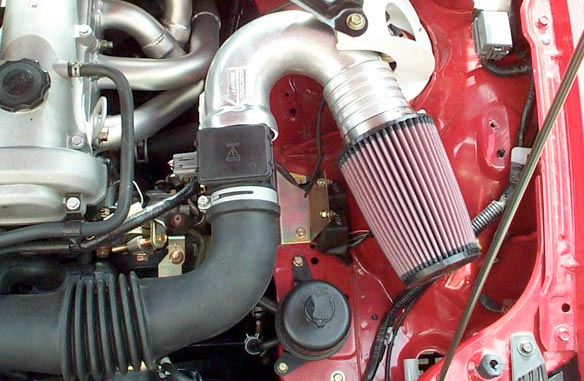
Manufacturer: Racing Beat
Claimed / Estimated Gain: 6 HP
Intake Placement: Driver’s Side Headlight Bucket
Heat Shield: Not Included
Compatible Years: 1994 – 1997
Warranty: Million Miles / 10 Years Limited Warranty on Air Filter
Racing Beat intakes are quite popular in the Miata community for three reasons:
- They look great,
- Are really easy to install,
- You may actually get some power gains.
Of course, you’d have to at least have an aftermarket exhaust among other things to achieve that 6 HP.
Pre-fitted with a high-performance K&N air filter, the most prominent advantage with a Racing Beat intake is the sound. It sounds throaty and aggressive, especially when paired with a good exhaust system.
It also tends to reduce your exhaust’s drone, making long drives more enjoyable. The biggest downside, however, is its tendency to get heat soaked on hot days and at prolonged high speeds.
Racing Beat intakes are also available for NB Miatas and NA Miatas with the 1.6-liter engine and show similar results across every variant.
CXRacing
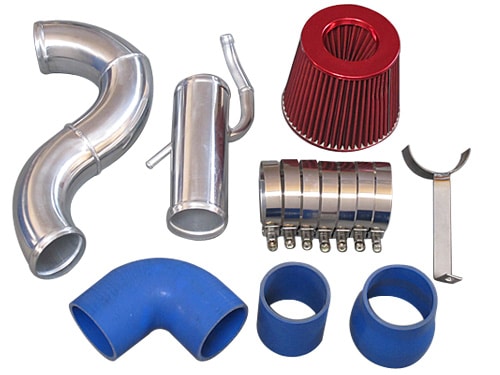
Manufacturer: CXRacing
Claimed / Estimated Gain: 3 HP
Intake Placement: Next to Driver’s Side Headlight Bucket
Heat Shield: Not Included
Compatible Years: 1994 – 1999
Warranty: None
Buy From: Amazon
Though CXRacing is known for other aftermarket performance parts, this particular product is unproven. It’s a bargain, but it has problems.
For instance, the pod filter brushes against the hood when it’s shut so you may end up having to either replace or reshape the filter.
It does not come with any instructions. Thankfully, installation is very straightforward.
It’s not the perfect Miata intake system but it looks really cool and adds a nice growl when paired with a good exhaust. Value wise, it’s worth considering.
XS Power
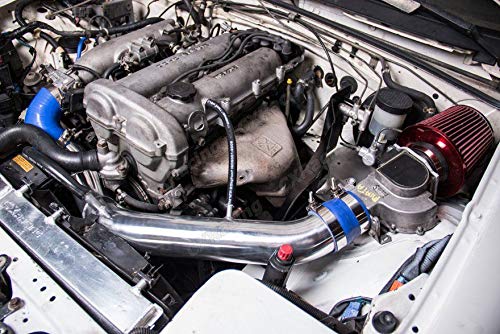
Manufacturer: XS Power
Claimed / Estimated Gain: 2 HP
Intake Placement: Driver’s Side Bulkhead / Firewall
Heat Shield: Not Included
Compatible Years: 1989 – 1987
Warranty: None
Buy From: Amazon
Just like CX Racing, this intake is also priced a little higher, but it’s for good reason. The tubing here is much longer than what you’d usually see.
This enables the air filter to sit away from the engine’s heat. Since the tubing goes all the way to the bulkhead, it opens up opportunities for some DIY improvements.
For example, you can reroute the air filter to draw air from the driver’s side fender well or you could go Randall Style.
Randall style intakes allow you to draw cool outside air from the windshield’s base. This ready-made kit requires you to cut a hole in your car’s firewall.
This may sound difficult but it’s not. Precise measurement and a simple hole-saw drill kit should do the trick.
There is a downside to this unit; heat soak may become an issue as the aluminum pipe runs right behind the radiator fan. But this can be easily fixed by covering the aluminum pipe with heat reflective adhesive roll.
For NB/Mk2 Miatas
The NB Miata falls short when it comes to sound and power. But it makes up for this with flawless handling.
You don’t have to compromise on power though. A few performance mods paired with a good intake system is all it takes for it to shine.
Pair an aftermarket intake system with a great exhaust and you’ll hear your car roar.
If a better sound is something you value, but you can’t afford to buy an expensive exhaust system, CAIs are the next best thing.
Check out some of our favorite NB Miata intake systems…
CXRacing
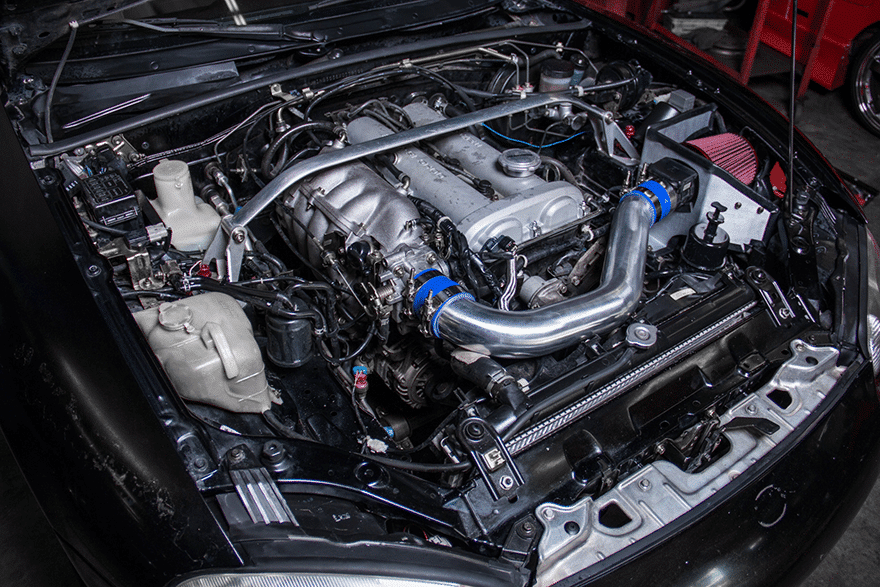
Manufacturer: CXRacing
Claimed / Estimated Gain: 2 – 3 HP
Intake Placement: 4 to 5 Inches from the Engine Head
Heat Shield: Included
Compatible Years: 1999 – 2005
Warranty: None
Buy From: Amazon
This CXRacing kit features a design that’s very similar to the K&N Typhoon but with slightly longer tubing. It also comes with a heat shield which does a fair job at keeping some of the engine heat away.
This is among the simpler kits to install on the NB Miata. This makes it a great option for those who want to install it at home but don’t have the confidence to fully DIY their intake.
Velocity Concepts
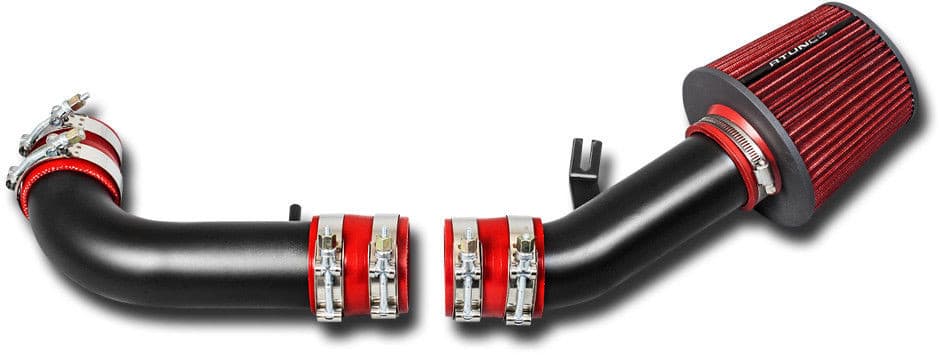
Manufacturer: Velocity Concepts
Claimed / Estimated Gain: 8 HP
Intake Placement: 2 – 3 Inches from the Engine Head
Heat Shield: Not Included
Compatible Years: 1999 – 2005
Warranty: 60 Days
Buy From: Amazon
This short ram intake by Velocity Concepts is another K&N Typhoon inspired design with identical tube lengths.
Unlike most kits in this review, the color selection on this one is rather plain. The matte black tubes blend well with the rest of the engine bay and don’t really stand out.
Performance-wise, we wouldn’t expect too much as there won’t be a lot of cold air entering this intake. Definitely not as much as the manufacturer claims.
Pair it with a heat shield along with a few more upgrades and you should be able to achieve 1 to 2 HP on a pleasant day.
K&N Typhoon

Manufacturer: K&N
Claimed / Estimated Gain: 3.58 HP
Intake Placement: 2 to 3 inches from the engine head
Heat Shield: Included
Compatible Years: 1999 – 2005
Warranty: 10 Year / Million Mile Limited Warranty
Buy From: Amazon
A combination of great quality, marketing, and a worldwide supply network has helped K&N achieve international popularity over the years. So when it comes to this product, you don’t need to worry about its source or reliability.
Though it’s advertised as a short ram intake, the Typhoon’s tube length is long enough for it to be classified as a cold air system. It’s the best cold air intake for NB Miata owners who really want a great sound.
You’ll need a heavy foot to observe that 3.58 HP gain as it kicks in around 6500 RPM. The fact that K&N has made near-realistic power gain claims is quite credible though; so brownie points for them.
These numbers have been backed up by their dyno test report. Yes, most manufacturer arranged dyno tests are performed in an unrealistic environment which is rigged to make upwards of 8 HP; but these numbers look legit.
For NC/Mk3 Miatas
The first two generations of the Miata take away the NC’s spotlight when it comes to aftermarket popularity.
The third-generation NC is considered by many to be the most underrated Miata. It’s one of the few cars that manage to bridge the gap between retro and modern.
It retains the driving dynamics of the NA while still being technologically relevant even today. Though it’s not too popular for aftermarket upgrades, these kits will not disappoint you.
AEM
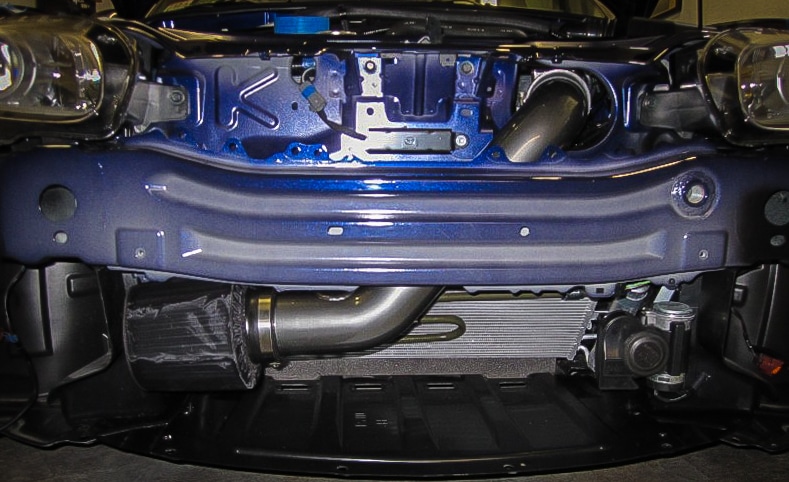
Manufacturer: AEM
Claimed / Estimated Gain: 5 HP
Intake Placement: Bumper
Heat Shield: Not Included
Compatible Years: 2005 – 2015
Warranty: Lifetime
Buy From: Amazon
AEM is a very well reputed, all-American brand known for manufacturing some of the most effective aftermarket components.
Speaking of effective, AEM intakes are the “coldest air intake” you can buy for your NC Miata. This is because they stay true to the original idea of a CAI and what they’re supposed to do.
It’s designed in a way that the air filter pod is neatly placed in front of the radiator, right behind the bumper.
The AEM cold air intake balances out what the stock airbox lacks in terms of heat management with cold air and only achieves a mild bump in performance. Unless of course, you get a tune.
The main advantages of the AEM intake include a decluttered engine bay, smoother throttle feel and a really nice intake sound.
Overall, this system is a trick piece of kit. It works perfectly well but has a drawback.
Because of how low it’s placed, driving over deep puddles runs a minor risk of hydrolock. Obviously, however, this is a concern for only a few Miata owners as these cars are usually driven on paved surfaces, in fair weather.
If you decide to buy this intake and do have this concern, AEM also makes a hydroshield to go along with their system.
The installation requires disassembly of the front bumper but this is helped by AEM’s detailed instruction manual.
DC Sports
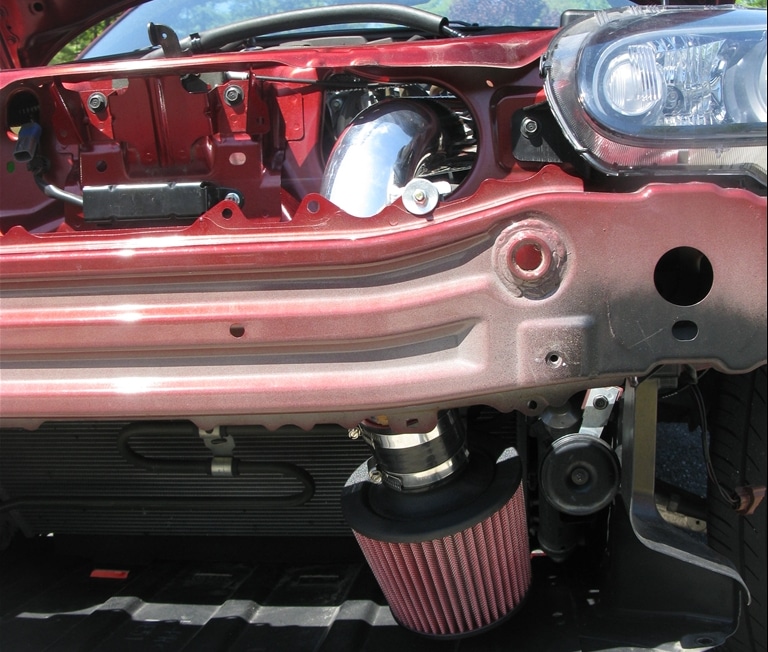
Manufacturer: DC Sports
Claimed / Estimated Gain: 4 – 5 HP
Intake Placement: Bumper
Heat Shield: Not Included
Compatible Years: 2006 – 2009
Warranty: 10 Years Limited Warranty
Buy From: Amazon
The DC Sports intake was designed around the same time as the AEM system. Interestingly, AEM owned DC sports for a short period between 2004 to 2007. This explains why the two share a similar design.
Just like the AEM intake, this one is also placed behind the front bumper which allows it to draw much cooler air than those placed in the engine bay. The individual parts look good and the quality is great for the price.
Compared with the AEM unit, complicated installation instructions are the only real drawback of this intake system, though we’d run the AEM hydroshield on this on as well.
DNA Motoring

Manufacturer: DNA Motoring
Claimed / Estimated Gain: 5 – 8 HP
Intake Placement: Bumper
Heat Shield: Not Included
Compatible Years: 2006 – 2009
Warranty: None
Buy From: Amazon
This intake kit will make you rethink going with AEM or DC Sports for one reason; price. It features the same design as the other two, is made with the same 6061 aluminum alloy pipes and provides similar power gains but at less than half the price.
Though the manufacturer’s power gain claims are higher than what you’d actually get, its real-world performance is not too shabby.
They’ve even managed to set the inlet pipe length and diameter in a way that it helps move more air into the cylinders, making your NC Miata rev freely.
For ND/Mk4 Miatas
Mazda made sure to keep improving the Miata with each iteration. By the time they launched the ND variant, its technology was so good that it eliminated the need for some basic performance mods. Some consider cold air intakes to be unnecessary on the ND.
If you are searching for a high-quality aftermarket intake for your ND Miata, these are the best on the market.
Mishimoto
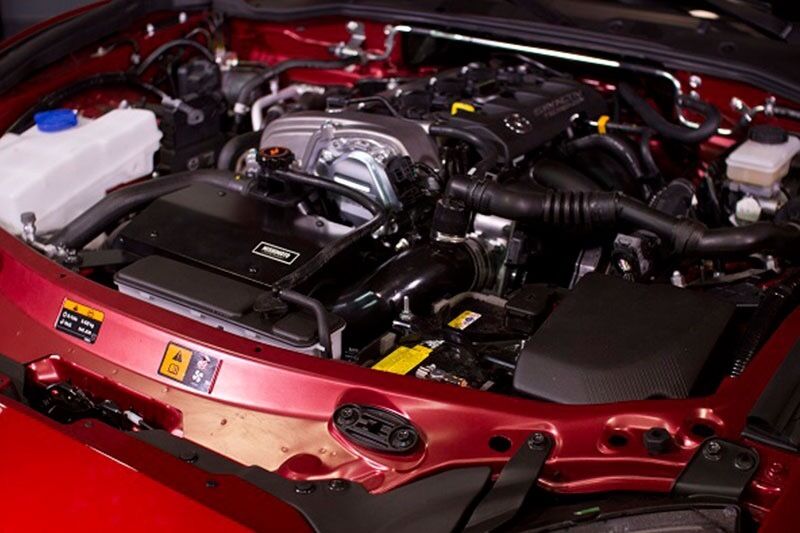
Manufacturer: Mishimoto
Claimed / Estimated Gain: 2.75 HP
Intake Placement: Factory Position
Heat Shield: Included
Compatible Years: 2016+
Warranty: Mishimoto Lifetime Warranty
Buy From: Amazon
We can’t conclude a guide about Miata modifications without listing a Mishimoto product. That’s saying something about the brand and for good reason.
They’ve managed to balance out their product quality, reputation, and price with the best possible mix.
The engineers at Mishimoto say that this cold air intake is focused on providing a great sound along with a modest power gain.
They went all out with the details too. The mass airflow sensor housing is CNC machined so that you get accurate sensor readings. It utilizes the stock intake duct to supply cold air to the intake filter.
When fitted, it sits neatly in a powder-coated heat-shield box.
Another interesting thing about this kit is that it uses an oiled filter instead of an air filter. These are more effective at filtering out dirt when compared to dry filters.
AEM

Manufacturer: AEM
Claimed Gains / Estimated Gain: 8 HP
Intake Placement: Factory Position
Heat Shield: Included
Compatible Years: 2016+
Warranty: Limited Lifetime
Buy From: Amazon
The AEM intake system for the ND Miata sits in the same position as the stock filter by utilizing the factory airbox.
From this design, it is clear that AEM developed this intake with the intention of retaining everything that made the stock system so effective.
They claim a power gain of 8 HP though we would expect somewhere around 2 – 3 HP in the higher RPM range. Considering the price and overall fitment, we like the Mishimoto system over this one, though the AEM unit is still worth considering.
Corksport
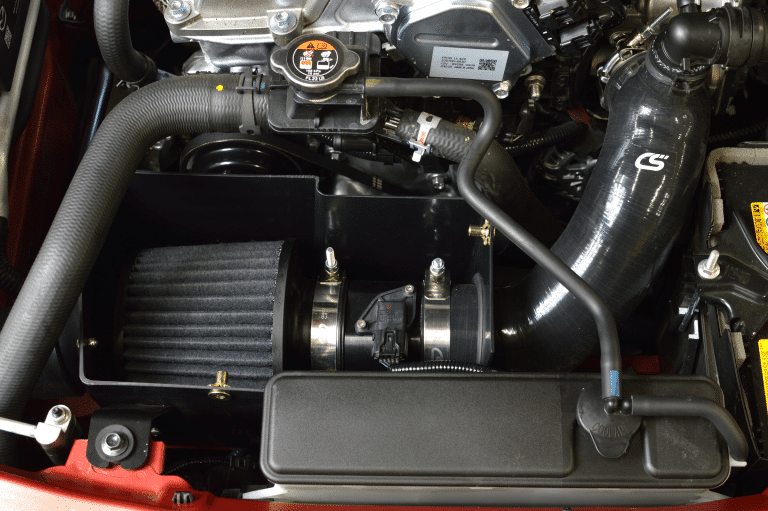
Manufacturer: Corksport
Claimed / Estimated Gain: 2 – 3 HP
Intake Placement: Factory Position
Heat Shield: Included
Compatible Years: 2016+
Warranty: 2 Years
Most Mazda owners are familiar with the Corksport name as this company specializes in many other aftermarket upgrades suited to both daily driving and racing.
This kit continues the trend of relying on the ND Miata’s OEM cold air ducting to achieve a good balance of stock functionality and aftermarket experience.
It does this with the help of AEM’s Induction Dryflow Filter which is less restrictive than most other air filters.
The most non-OEM thing you’ll experience with this intake is the hissing sound during acceleration and deceleration. It’s the best intake sound we’ve heard on the ND Miata.
The Best Miata CAI Kits: Our Verdict
With so many tempting options to choose from, we’re sure that anyone looking for a great cold air intake for their car will feel spoilt for choice.
If you simply want the best for your generation, consider choosing one of these:
The Best CAI for NA Miata Owners: Jackson Racing
For NA Miatas, we’d go with Jackson Racing. If you plan on building your intake, we strongly recommend looking into the Randall Cowl Duct inspired designs.
For NB Miatas: K&N Typhoon
Gain or not, the Typhoon’s soundtrack is just too good to pass up!
Our Favorite CAI for NC Miatas: AEM
AEM all the way, without a doubt. If the price is a concern, DNA Motoring is the better option.
Our Prefered ND Miata Intake: Mishimoto
It’s a difficult choice between Mishimoto and Corksport but Mishimoto really is the better option.
How would you choose the best Miata intake? Did you buy one ready made or DIY? Tell us in the comments below!

